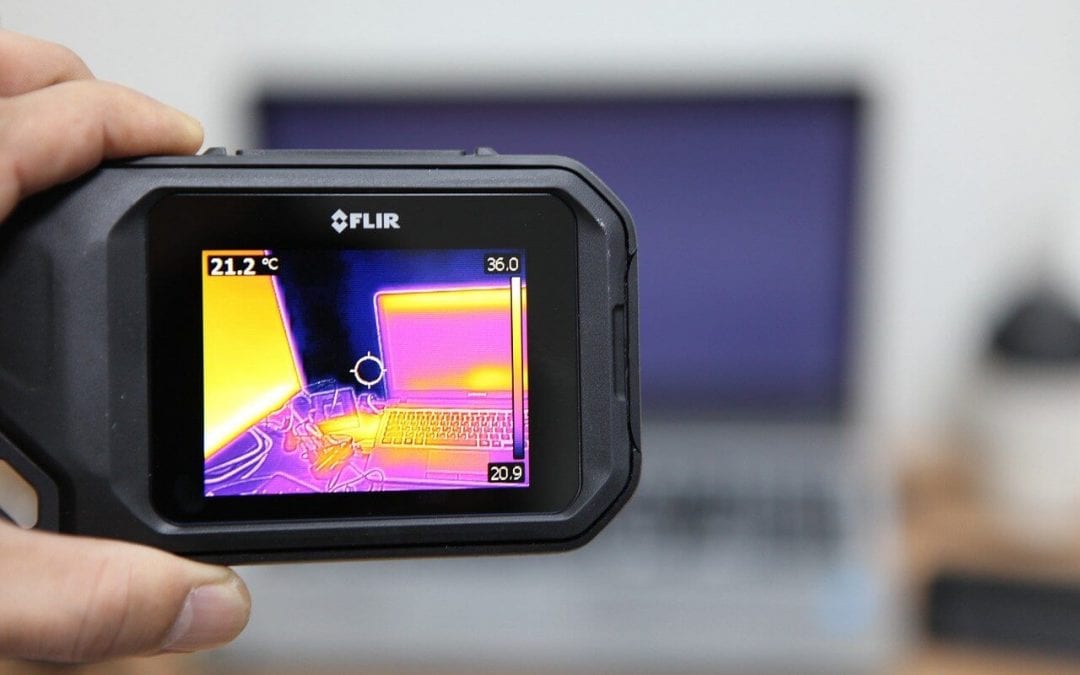How Does Thermal Imaging Work in Home Inspections?
Inspectors use a thermal camera that converts infrared radiation (heat) into visible light. The images display a spectrum of colors showing the distribution of temperature variations in a home.
By being able to “see” the heat emitted from different components or areas, your home inspector can identify hidden issues that could cause problems in the future. Your inspection report will include images and detailed explanations of the findings.
Problems Thermal Cameras May Detect
Because an infrared camera reads the heat signature of an area, the home inspector can better detect problems around the house. With thermal imaging, inspectors can locate issues such as missing or insufficient insulation, malfunctioning outlets, hotspots in the electrical system, moisture intrusion, and even a pest infestation.
Missing or Insufficient Insulation
When the home is lacking insulation, controlling the temperature is challenging and expensive. Improper insulation will impact your comfort levels and your energy bill. Before buying a home, it’s helpful to know if you’ll need to add insulation to boost energy efficiency.
Gaps or cracks around windows and doors allow cold or hot air to enter and escape the home. During a home inspection, the thermal camera will show temperature differences that help to pinpoint the affected areas. A thermal image will reveal heat loss whether through the walls, attic, windows, or doors.
Moisture Buildup
Moisture encourages mold growth and causes structural damage. Visible signs of moisture damage appear as stains on ceilings or walls and bubbling or cracked wallpaper and paint. However, sometimes a leak is hidden and there are no outward signs of trouble.
Thermal imaging will alert the inspector to areas of moisture intrusion. The camera may show distinctively cooler spots in the walls or ceilings that indicate moisture is a problem.
Thermal Imaging in Home Inspections Detect Hotspots
Electrical hotspots are a safety hazard to your home and family. Damaged wiring and overloaded circuits emit heat that an infrared camera can detect. Locating areas that are overheating is useful in diagnosing problems and locating safety concerns in a home.
Choose an Inspector Who Uses Thermal Imaging
If you’re buying a house, hire an inspector who uses thermal imaging. This technology will help you plan for future repairs and will advise you of any major problems or safety concerns.
Bronze Star Home Inspections provides home inspection services to the Dallas-Fort Worth Metroplex. Contact us to book an inspection.

